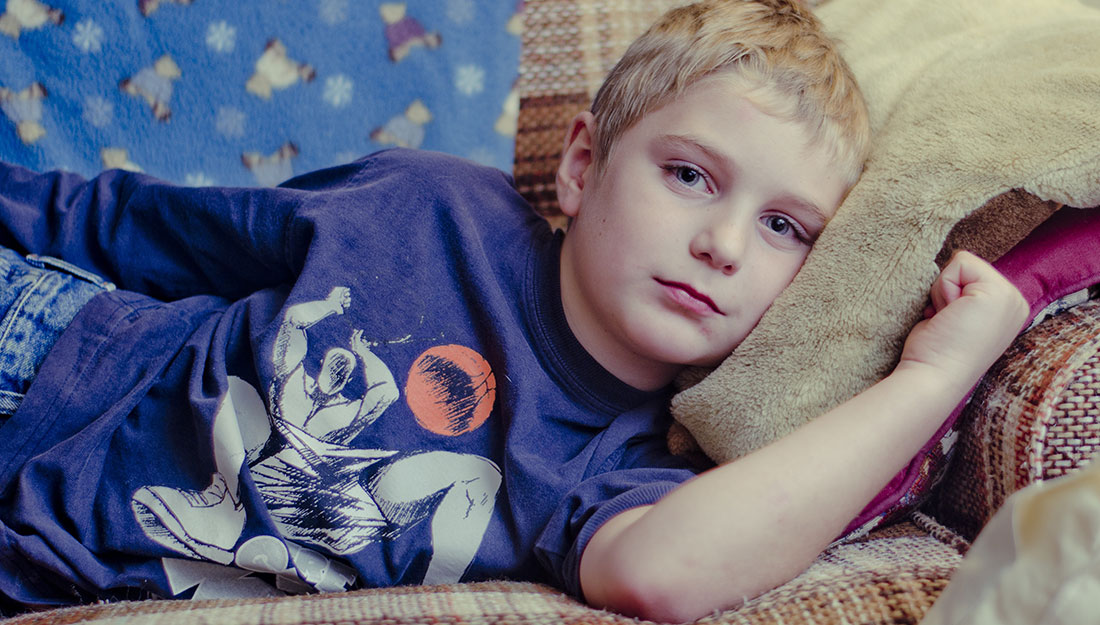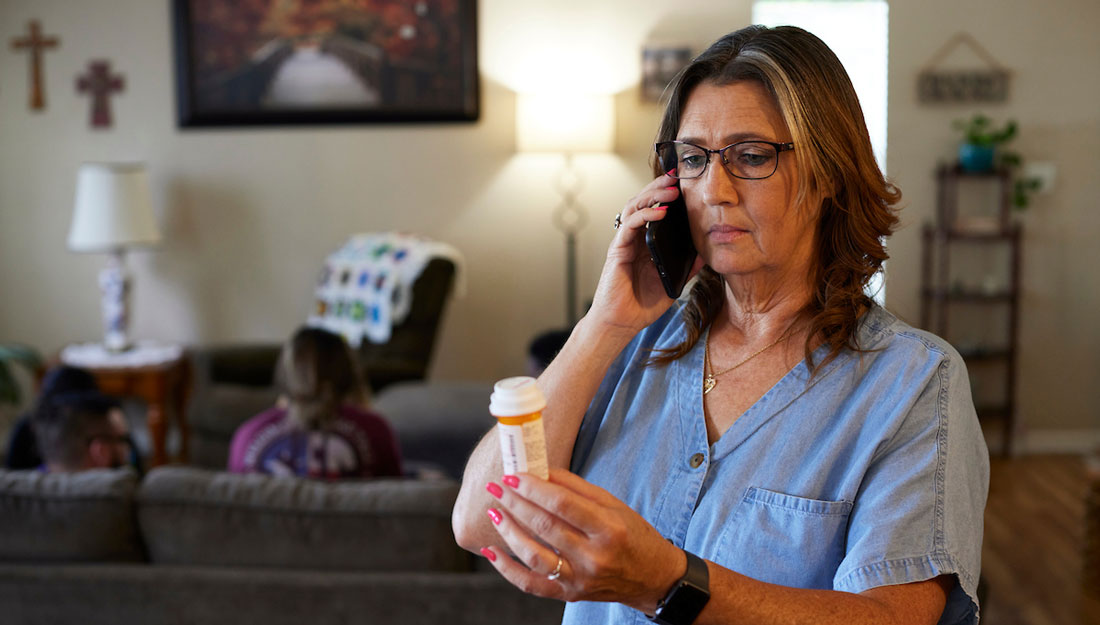- Dominic Hernandez
- Healthy Living, Nursing, Show on VR homepage, Trending
Common childhood illnesses and how to spot them
What to look for when your child is under the weather

Your son is refusing to eat, his face looks flushed and energy is low. You can tell right away something is wrong. Laying a hand on his forehead you feel he is burning up. Frantically, you call and schedule an appointment with your pediatrician as worried thoughts consume your mind. Is it only a cold or something more serious?
Seeing your child sick and in pain can often be a parent’s worst nightmare, and it’s easy to assume the worst. Whether it’s from coming into contact with other infected kids or adults, or because children tend to put every object they see in their mouth, sickness is almost inevitable.
Jacqueline Stout-Aguilar, Ph.D., a registered nurse, clinical assistant professor at the Texas A&M Health Science Center College of Nursing and former elementary school nurse, explains the best ways to spot common illnesses and how to keep your child smiling, healthy and happy.
Common Cold
Appropriately named, the common cold is one of the biggest culprits behind sick kids everywhere. Spread by rhinovirus, it’s not treatable with antibiotics. Colds are typically identified by symptoms like a mild fever, coughing, congestion and a sore throat. Most pediatricians recommend using children’s fever reducers as directed, ample rest until the child makes a full recovery and drinking plenty of fluids.
Influenza
Influenza is another nasty virus that runs rampant through childhood. “Symptoms of the cold and flu can be hard to distinguish between,” Stout-Aguilar said. “The flu typically presents with a higher fever, fatigue and headaches, but, with a more rapid of symptoms.” Unlike the common cold, the flu can lead to more serious conditions like pneumonia—so it is very important to get a flu vaccine before the start of every flu season.
Strep Throat
Another common childhood illness is strep throat. Your child is most likely to get this at school or daycare. Strep throat is a very contagious bacterial infection that leads to severe sore throat and fever. Sometimes strep can produce a rash, nausea or swollen lymph nodes. If you suspect that your child has strep, take them to a physician immediately, and teach them the proper way to cover a cough and wash their hands.
Antibiotics are typically used to treat bacterial infections, and they begin to work quickly, but “it is important to keep the child home and assure that they are symptom-free for 24 hours before they go back to school or daycare,” Stout-Aguilar said. “Make sure they complete their full course of medication, assuring that they don’t return to school if they still are having symptoms.”
Rotavirus
Often present in an infected person’s stool, rotavirus is a common illness in children ages 3-35 months. Infection may present with severe watery diarrhea, vomiting, fever, and abdominal pain. The symptoms can last about a week, as the virus is worked from the system naturally. The most common complication is dehydration from loss of bodily fluids, so make sure that your child is properly hydrated during these times.
Adults and older children may get it; however, the symptoms may be mild or non-existent. The best way to avoid rotavirus is with proper hygiene.
“It is important to wash your hands using friction, soap and warm water,” Stout-Aguilar said. “Viruses can remain infectious on surfaces for days if the area isn’t cleaned.”
Head lice and scabies
These classic schoolyard parasites are contracted by close contact with someone who is infected, and typically manifest with itching.
An estimated 6 to 12 million infestations occur each year in the United States among children ages 3 to 11 years of age. These can be treated at home through comb and oil treatments, or with medication. It is best to call your physician and ask their recommendation, as new reports have found that certain lice have become resistant to over-the-counter medication.
Unlike lice, which is an arachnid passed from person-to-person through shared personal items, the mite (Sarcoptes scabiei) responsible for transmitting scabies requires a host to live. Therefore, the most common way to contract scabies is through direct contact.
Scabies often presents itself with an itchy rash, normally around the waist, arms or wrists. For someone who has never had scabies, symptoms do not usually appear until weeks after infestation. However, if you’ve had scabies before, symptoms may appear within days of infestation. Your physician will provide medication to kill the mites and relieve any itching.
“These infestations are quite common in schools,” Stout-Aguilar said. “While the lice or mite itself might not be very problematic, the itchiness and scratching it produces can lead to further infection.”
Pink eye
One of the most common childhood illnesses is also one of the most identifiable. Pink eye (conjunctivitis) is an infection that causes inflammation of the eye and the the whites of your eyes to appear red or pink.
Pink eye is highly contagious, so don’t send your child back to school until they’re fully healed. It’s also important to avoid touching contaminated towels or washcloths to prevent catching the condition yourself. Make sure to wash your hands and all objects used by your child often.
Treatments can help speed up the healing process, however pink eye usually will clear up on its own.
Respiratory Syncytial Virus Infection (RSV)
According to the Centers for Disease Control and Prevention (CDC), almost all children will have had an RSV infection by their second birthday, and their symptoms will mirror a common cold. However, a small percentage of RSV can cause upper or lower respiratory infections in young children. These chances increase if your child was premature, was born with heart or lung disease, has a weakened immune system or is under 8 to 10 weeks old.
There is no specific treatment for RSV infections, however the subsequent infection can be treated. Infants and children infected will show symptoms four to six days after infection, and will likely recover in one to two weeks. If your child has difficulty breathing, a high fever, unusual irritability or inactivity or signs of dehydration, call your physician.
Fifth Disease
Commonly called “Slapped Cheek Disease,” fifth disease is a viral illness, typically in children between 5 and 15 years old, that produces a distinctive red rash on the face similar to a “slapped cheek.” The rash often spreads to the torso, arms and legs. Fifth disease may begin with a small fever, headache and mild cold-like symptoms. The rash may appear later, but the illness isn’t contagious at this point of the infection.
“These symptoms aren’t typically serious in children that are otherwise healthy, and the child will usually feel better on their own,” Stout-Aguilar said. “Many doctors may recommend an alternation of Tylenol and Motrin for fever.”
Trust your instincts about taking your child to the doctor
Stout-Aguilar stressed promoting good hygiene and proper nutrition is a big part of keeping your child healthy. “Your immune system needs protein, vitamins and minerals,” she said. “Make sure your child is eating well-balanced meals and washing their hands correctly with friction, warm water and soap.”
If your child starts to develop an illness, and you’re not sure whether to take them to their provider, trusting your instincts is key. “You see your child every day; don’t ignore changes in habits such as not eating, not drinking or having trouble in the bathroom,” Stout-Aguilar said. “When it comes to the health of your child, always err on the side of caution.”
Media contact: media@tamu.edu


